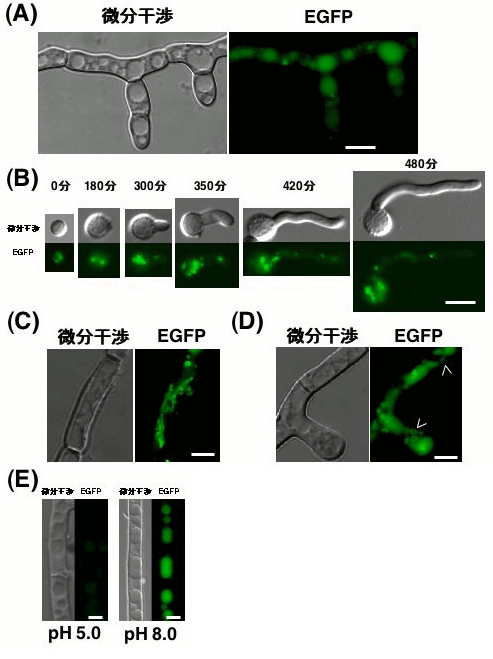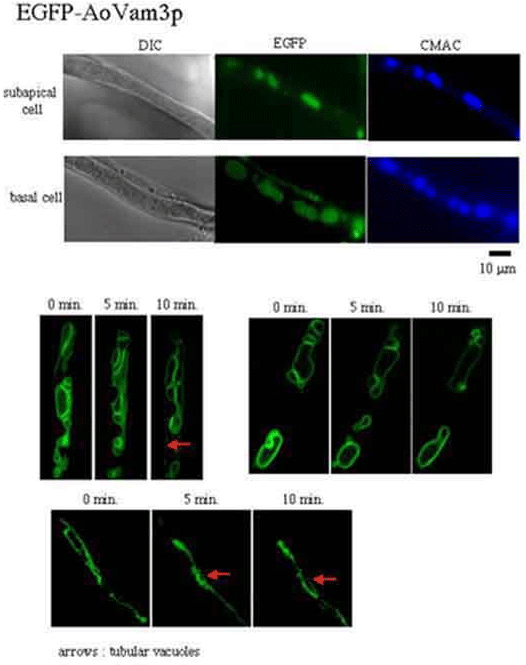Vacuole is an acidic compartment possessed by plants and fungi. It is an important organelle for storage of various substances and proteins and for ion homeostasis in the cytoplasm. In general many vacuoles are observed in older parts of hyphae in filamentous fungi. The vacuoles in young hyphae near growing tips are immature. This suggests the possibility that vacuoles have different stages of development and roles according to the different parts of the hyphae.
By expressing carboxypeptidase Y (CPY; an enzyme localized at the vacuoles), as an EGFP (Enhanced Green Fluorescenct Protein) fusion protein in Aspergillus oryzae, we succeeded in visualizing the vacuoles (Fig.1). Many vacuoles were located even in the conidia suggesting that vacuoles play a certain role in conidium. Moreover, we found out that in addition to the spherical shape, sometimes vacuole has a tubular shape or ring-like shape peculiar to filamentous fungi.

Fig.1
We also succeeded in visualizing the vacuolar membranes by using the AoVam3p protein fused to EGFP. AoVam3p is a t-SNARE located on the vacuolar membranes of Aspergillus oryzae. Under the confocal laser scanning microscope, we can observe the movement of vacuolar membranes, vacuolar membrane fusion, the movement of tubular vacuoles, and the structural changes in the vacuoles from sperical to tubular shapes (Fig.2). (movie 1, movie2, and movie3. The movies were taken at every 5 seconds, with playback at 5 frames per second.)

Fig.2
Although there have been many reports on the vacuoles of the budding yeast which is the model of eukaryotic microorganisms, there is almost no information about them in filamentous fungi which are model eukaryotic multicellular microorganisms. As seen here, the vacuoles of filamentous fungi have many features which are not seen in budding yeasts. Especially, the possibility of tubular vacuoles working as transporters of various substances or proteins between the compartments of long hyphae can be considered. We think that the vacuoles in filamentous fungi are specialized because filamentous fungi have the extended hyphal-shape. The relation between the shape and functions of the vacuoles in filamentous fungi can be solved by combining molecular biological and biochemical techniques.
In addition, we succeeded in visualizing endocytic pathway in A. oryzae, using AoUapC, a putative purine permease fused with EGFP. Endocytosis is a mechanism by which extracellular compounds and plasma membrane proteins are taken-up and transported to vacuoles for degradation. When the endocytosis of the fusion protein of AoUapC with EGFP was induced by the addition of ammonium, many particulate endosomal structures appeared in hyphae. These endosomal structures moved ~50 mm at an average speed of 5 mm/sec in a microtubule-dependent manner (movie 4). (The movie is replayed at real time.)